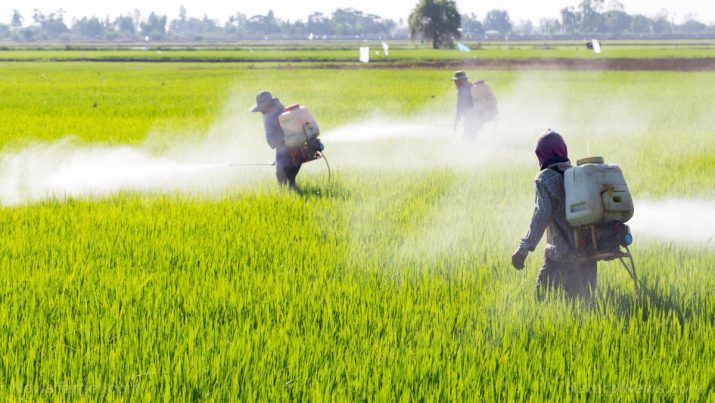
Methyl bromide – toxicity, side effects, diseases and environmental impacts
Saturday, November 11, 2017 by Earl Garcia
http://www.naturalpedia.com/methyl-bromide-toxicity-side-effects-diseases-and-environmental-impacts.html

Methyl bromide is first introduced as a pesticide in 1932 and is eventually registered in the U.S. a few decades later in 1961. A fact sheet published by the National Pesticide Information Center notes that methyl bromide is a widely used fumigant among farmers to amend the soil and protect crops against nematodes, fungi and weeds. Likewise, farmers traditionally use the compound to treat perishable goods. Moreover, the colorless and non-flammable gas is traditionally used to drive away pests such as spiders, mites, insects and rodents.

List of known side effects
Methyl bromide is known to cause detrimental effects on the respiratory tract, as with any other pesticides. According to a Toxipedia entry, inhaling the hazardous gas may result in respiratory tract irritation and breathing difficulties. The article has also stressed that the toxic chemical may negatively affect the central nervous system and trigger various related conditions such as convulsions, dizziness and headache as well as hallucinations, loss of speech and reduced coordination.
Likewise, methyl bromide exposure may cause a host of gastrointestinal disorders such as weakness, vomiting and abdominal pain. The entry also stresses that direct skin contact may lead to tingling and itching. The chemical may actually seep into the skin and cause redness, burning sensation, pain and blisters, the article adds. Moreover, the entry cautions that direct eye contact may result in severe irritation characterized by redness and pain. Methyl bromide exposure may also cause blurred vision and temporary vision loss.
Aside from being a health risk, the toxic chemical is also known to spur environmental side effects. The hazardous fumes coming from the chemical is found to play a role in the thinning of the ozone layer. Likewise, the toxic pesticide is shown to contaminate the soil and may even pose a threat to water ways and aquatic animals.
Body systems affected by methyl bromide
Methyl bromide is detrimental to the respiratory tract and the central nervous system. The harmful pesticide may negatively affect the digestive system, the skin and the eyes as well.
Items that can contain methyl bromide
Methyl bromide is primarily found in various pesticides and fungicides. Likewise, the harmful compound is used as a refrigerant, fire extinguishing agent and as a solvent in dye production.
How to avoid methyl bromide
It is advisable to wear protective clothing and equipment in order to prevent methyl bromide exposure. Likewise, it is recommended to immediately wash the eyes and the skin with plenty of water should a direct contact occur. Experts also suggest that people exposed to the harmful chemical seek immediate medical attention if symptoms of contamination persist.
Where to learn more
- Bush Administration pushes for approval of ozone-destroying pesticide methyl bromide
- Natural molasses treatment works just as well as toxic methyl bromide at mitigating weeds and pests, says USDA
- “The Dark Side of the Strawberry”: WWI enemy-killing gas now being used on America’s fruit
- Environmental discrimination: EPA refuses to protect Latino students from pesticide poisoning, ignores complaints for 12 years
- Brominated Vegetable Oil-Flame Retardant in Sodas, OTC Medicines, Inhalers and More
- Avoid these foods from China: they are filled with plastic, pesticides and cancer-causing chemicals
Summary
Methyl bromide may cause respiratory irritation, hallucinations, loss of speech and reduced coordination.
Methyl bromide triggers weakness, convulsions, skin irritation and abdominal pain.
Methyl bromide may raise the odds of suffering from blurred vision and temporary vision loss.
Methyl bromide is detrimental to the respiratory tract and the central nervous system.
Methyl bromide negatively affects the digestive system, the skin and the eyes as well.
Sources include:
Tagged Under: Tags: Methyl bromide





